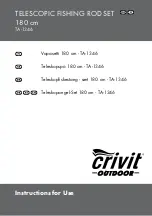
43
SYSTEM & MIDI
I/O Setup
The Signal page
In the Signal page, the Input and Output routings are set up. The
Signal page includes the setup of the Insert loop. Use the
Parameter wheel to change cursor position, and the Value wheel
to change values.
Input
The FireworX can use Analog, AES/EBU, S/PDIF, TOS link or
ADAT inputs. Dial the Value wheel to select the input you desire.
Analog - The A/D and D/A converters of the FireworX are 24
bit. To obtain maximum quality of the A/D converter, the Input
level should read approximately -6 to -3dB on the Input PPM.
Adjust Analog input by using the Input knob in the upper left
corner of the FireworX.
NOTE: The Input overrules the Insert loop selection, meaning
that the setting selected at the Input cannot be chosen at the
Insert loop.
AES/EBU - Digital AES/EBU can run up to 24 bit. Use the
balanced XLR Digital In/Out for this connection. AES/EBU
should use balanced 110 Ohm cables. The incoming sample rate
will be displayed in the Level page. The Digital LED will be
blinking if no clock is present or if the FireworX cannot lock to
the incoming clock.
S/PDIF - Digital S/PDIF can run up to 20 bit. Use the RCA jacks
In/Out for this connection. S/PDIF should use unbalanced 75
Ohm cables. The incoming sample rate will be displayed in the
Level page. The Digital LED will be blinking if no clock is
present or if the FireworX cannot lock to the incoming clock.
Tos link - Optical Tos link uses the S/PDIF digital format. Use
the Optical In/Out for this connection. Tos link uses fiber optic
cables. The incoming sample rate will be displayed in the Level
page. The Digital LED will be blinking if no clock is present
or if the FireworX cannot lock to the incoming clock.
ADAT - When using ADAT, use the Parameter wheel to move
cursor to Left/Right boxes, and the Value wheel to select channel
number. It is possible to select two ADAT channels, process them
and send them out on two different ADAT channels and
AES/EBU, S/PDIF and Analog simultaneously. The incoming
sample rate will be displayed in the Level page. The Digital
LED will be blinking if no clock is present or if the FireworX
cannot lock to the incoming clock.
NOTE: The six unprocessed channels are not passed through the
FireworX.
Ch. (Channel)
The Channel parameter selects which channels the FireworX are
using for Input. The four possibilities are:
Left input only (L).
Right input only (R).
Left and Right summed to Mono (L+R).
Stereo (STE).
Insert
The Insert loop is a unique feature that makes it possible to insert
an external device into the Routing of the FireworX. The Insert
can use either the Digital (AES/EBU or S/PDIF) or Analog
In/Outs of the FireworX, depending on what is taken up the
actual In and Outputs of the FireworX.
Example: The FireworX is set up to use the AES/EBU digital as
input source, the Insert loop can now use the Analog In/Outs (see
Insert loop for further description).
NOTE: The Input parameter always overrides the Insert setting,
meaning that if the Insert parameter is set to Analog, and the
Input parameter is changed to Analog, the Insert will
automatically be set to None.
Clock
The Clock parameter determines what source the FireworX is
using as digital clock. The FireworX can use internal 44.1kHz,
internal 48kHz, the incoming Digital sample rate (from the
selected Digital input) or the optional external sync (word clock).
The FireworX is capable of using its own internal clock while
using audio from the Digital input. This means that you can use
the FireworX as master clock when working in a digital setup.
The FireworX will automatically switch to the appropriate clock
when you select Input source, e.g. you select AES/EBU as your
input source, the FireworX now automatically switches the Clock
parameter to Digital.
NOTE: The optional external sync input will only recognize
standard word clock from 44.1kHz to 48kHz.
Digital external clock display
When the FireworX is locked to any external clock, this area will
display the incoming sample rate.
Dither
The FireworX can output dither for 8 through 22 bit resolution to
Off. The dither type is HP-TDF or High Passed Triangular
probability Density Function.
FireworX is using internal 24 bit resolution and 24 bit AD/DA
converters. Dither should therefore only be used in case the
digital outputs are used. It is recommended to not use dither until
the final stage of a production, so if there is a chance that the
source material is going to be dithered later in a production, do
not use dither.
Содержание FireworX
Страница 1: ...FireworX STUDIO EFFECTS PROCESSOR USERS MANUAL...
Страница 2: ...2...
Страница 11: ...11...
Страница 47: ...47 SYSTEM MIDI I O Setup...
















































